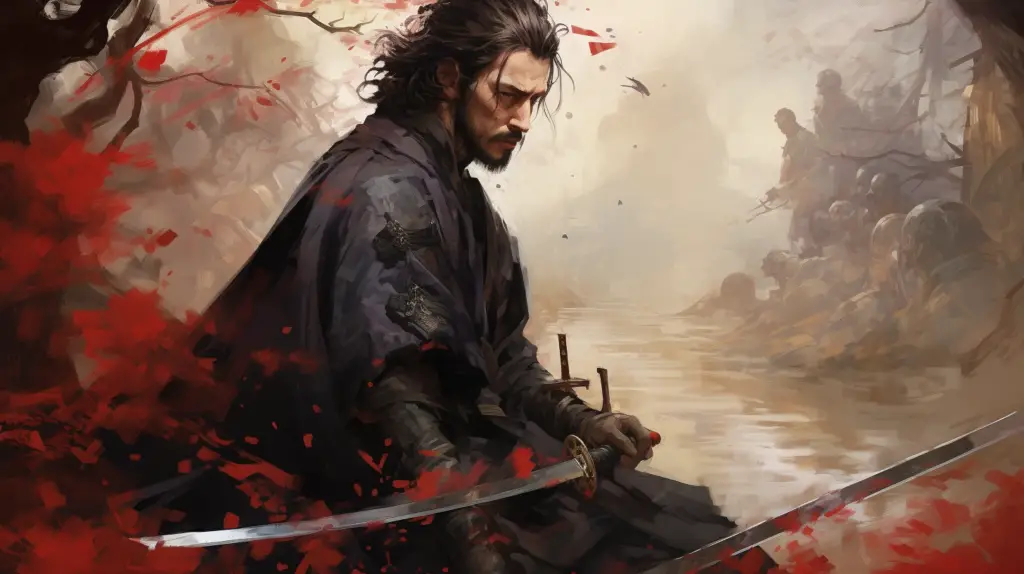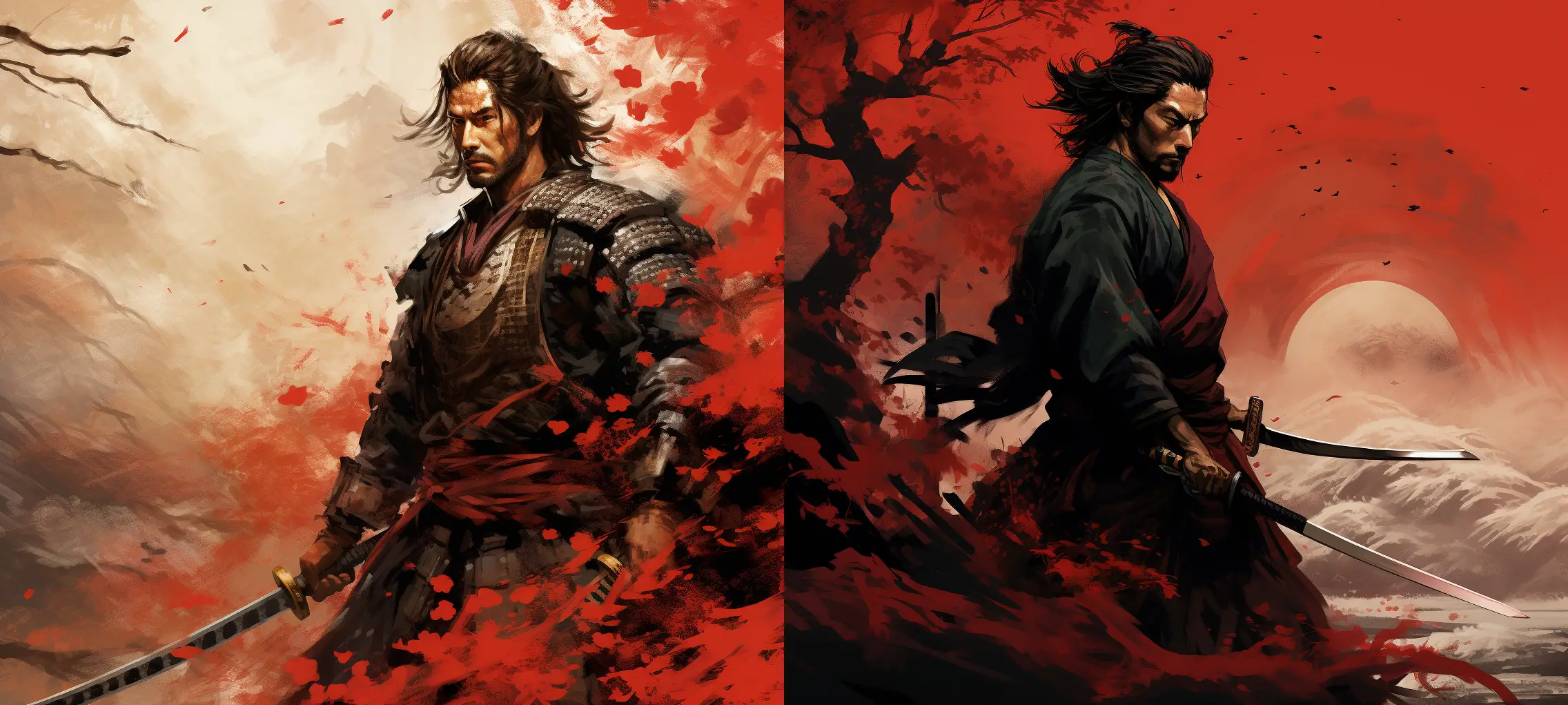Miyamoto Musashi is an iconic figure in Japanese history, his name synonymous with the archetypal samurai. Known as the sword-saint of Japan, Musashi’s life is steeped in legend, blurring the line between myth and reality. A master swordsman, an undefeated duelist, a profound philosopher, and a skilled artist, Musashi’s influence has transcended time and geography, making him an enduring symbol of the samurai tradition.
This article delves into the life of this remarkable figure, offering a glimpse into the making of a quintessential samurai.
Miyamoto Musashi: The Samurai
- Early Life and Training: Born around 1584 in Harima Province, Miyamoto Musashi was introduced to martial arts at a young age. His father, a renowned warrior himself, was said to be his first teacher. However, much of Musashi’s skills were self-taught, shaped by his personal experiences and introspection.
- Unrivaled Duelist: Musashi’s life was marked by numerous duels, over 60 according to historical records, none of which he lost. His first recorded duel took place at the tender age of 13 against a samurai named Arima Kihei. His most famous duel was against the acclaimed Sasaki Kojiro, which Musashi won using a wooden sword he carved from an oar.
READ MORE: Miyamoto Musashi Posters (and 10 Interesting Facts about the Legendary Swordsman) - Innovative Martial Techniques: Musashi developed a distinctive two-sword fighting technique known as Niten Ichi-ryu, or the “school of the strategy of two heavens as one”. This style, utilizing both a long sword (katana) and a short sword (wakizashi), was unique for its time and demonstrated Musashi’s innovative approach to martial arts.
- The Ronin Years: A considerable part of Musashi’s life was spent as a ronin – a samurai without a lord or master. During these years, he travelled extensively across Japan, challenging renowned warriors and refining his martial arts skills. His experiences as a ronin deeply influenced his philosophy and outlook on life.
- Retirement and Writing: In his later years, Musashi retired to a cave known as Reigandō, or “Spirit Rock Cave,” where he devoted his time to writing and meditating. It was here that he penned his most famous work, “The Book of Five Rings,” which provides an in-depth exploration of his martial strategy and philosophy.
READ MORE: Miyamoto Musashi Praying: His Spirituality, Beliefs and Practices
Musashi’s Legacy
Even centuries after his death, Miyamoto Musashi’s legacy as a samurai continues to resonate. His martial philosophy, as detailed in “The Book of Five Rings,” remains a crucial resource for martial artists and strategists. His principles and philosophies have been applied to various fields, from business to personal development.
Musashi’s life is also celebrated in numerous works of fiction. Books, movies, manga, and video games often feature him, attesting to his enduring influence and popularity. His final resting place in the village of Yuge has become a pilgrimage site for martial artists and enthusiasts who revere his legacy.
READ MORE: Miyamoto Musashi’s Philosophy: An Enduring Wisdom
Conclusion
Miyamoto Musashi embodies the spirit of the samurai – indomitable in the face of adversity, unwavering in the pursuit of mastery, and devoted to a life of discipline and self-improvement. His legendary status as a warrior and philosopher underscores the multi-faceted nature of the samurai tradition. Through his life and works, Musashi continues to offer invaluable insights into the way of the samurai, making him a timeless icon in the annals of samurai history.



